With HF conditions poor at the moment, 2 metres with a bit of antenna gain is a good backup or main setup for SOTA.
I wanted to make this antenna very lightweight and easy to carry in the pack without damage. This is the design I settled on.
The boom is 20mm PVC electrical conduit (Bunnings) and the elements are 2.4mm aluminium TIG welding rod (Bunnings).
The antenna is carried as a single length of conduit with the elements stowed inside the boom, sealing them in with a bung. The driven element is connected directly to 50 Ohm coax with a BN-43-202 balun core to decouple the coax shield.
The antenna was modelled with Yagicad by VK3DIP. The driven element was positioned for a compromise between gain and an easy match for a direct feed. See element lengths and positions below.
The boom has 25mm hex M3 threaded stand offs (Jaycar) inserted through it for mounting the director and reflector. The driven element has a 10mm threaded M3 Nylon stand off (Jaycar) with two 10mm M3 male/female standoffs screwed together to form an insulated driven element mount. The element mounts fit tightly into holes through the boom and then fixed in with Polyurethane glue (Bunnings).
The elements consist of 2.4mm Aluminium TIG rod that is joined to a short M3 threaded bolt section so it can screw into the boom mounts with fingers. The aluminium rod and the M3 thread are joined with screw terminal inserts. Originally, I was going to use copper plated steel welding rod directly soldered into M3 male/female standoffs but these rods were too heavy for my liking. It would have been a neater solution though.
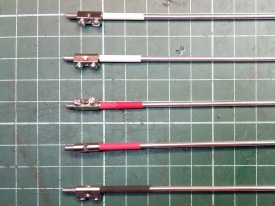 As it stands, without the coax feed connected, the Yagi weighs just over 200 grams. The elements are a bit fragile, but they do have some spring before they stay bent. They will be well protected inside the boom when in the pack.
As it stands, without the coax feed connected, the Yagi weighs just over 200 grams. The elements are a bit fragile, but they do have some spring before they stay bent. They will be well protected inside the boom when in the pack.
The SWR is under 1.5 at 146.5 MHz which is fine for the simple match. The coax feed uses a 1.5 metre length RG-178 terminated in an SMA plug for direct connect to a portable 2m radio.
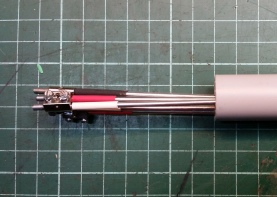 The elements are colour coded with heatshrink to identify where they are to be screwed in.
The elements are colour coded with heatshrink to identify where they are to be screwed in.
The balun core is held to the boom along with tape and heatshrink.
The next step is to make a better element to thread arrangment. The terminal block inserts seem fine for the moment though. It doesn’t take long to unscrew the elements from the boom and stow them inside.
The last photo shows the yagi ready to pack away. The total length is 1 metre, much the same length as the longer squid pole.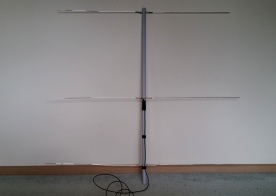

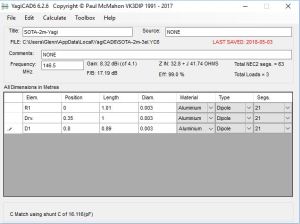
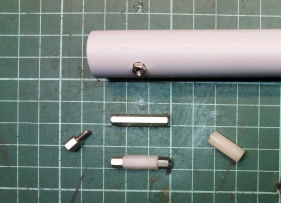
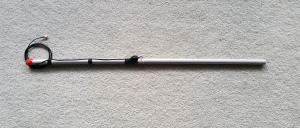
Hi there
As the boom is made of PVC, I’m curious to know why you insulated the driven element.
73, Gareth – M5KVK
Hi Gareth, the only reason the driven element is insulated is because is driven as a dipole. There had to be an insulator in the centre of the dipole. The coax is directly fed to the dipole on each side of the insulator. Cheers, Glenn.
More or less as soon as I finished posting that, I realised: “It’s a dipole, stupid” 🙂
Thanks, Glenn
Gareth: antenna 101 – (failed)
Nice work as usual Glenn. I presume you cut the M3 threaded joiners (ends of elements) from a regular plastic terminal block. Perhaps you could M3 thread the half-elements? That presents a few challenges, as most threaded elements in commercial aerials are stainless or other steel.
How do you attach your beam to a squid pole? — VK3HN.
Hi Paul, Yes, the thread to element joiners are just inserts from a plastic terminal block, I chose a small one with 3mm ID. M3 threading the elements would be nice. I am going to make a threaded joiner on the lathe out of some 5mm dia brass rod when time permits. I was going to use the beam hand held mainly but I do have plastic double ended clamp that should hold it to the squiddy.
Nice work. Look forward to hearing how far you work and how many chasers you find on 2m SSB.
Thanks. It only has modest gain but we will see!
Nice work Glenn. Good to see others thinking of options to work the higher bands.
73 Andrew VK1AD
Not as high as the bands VK1 has been using!!